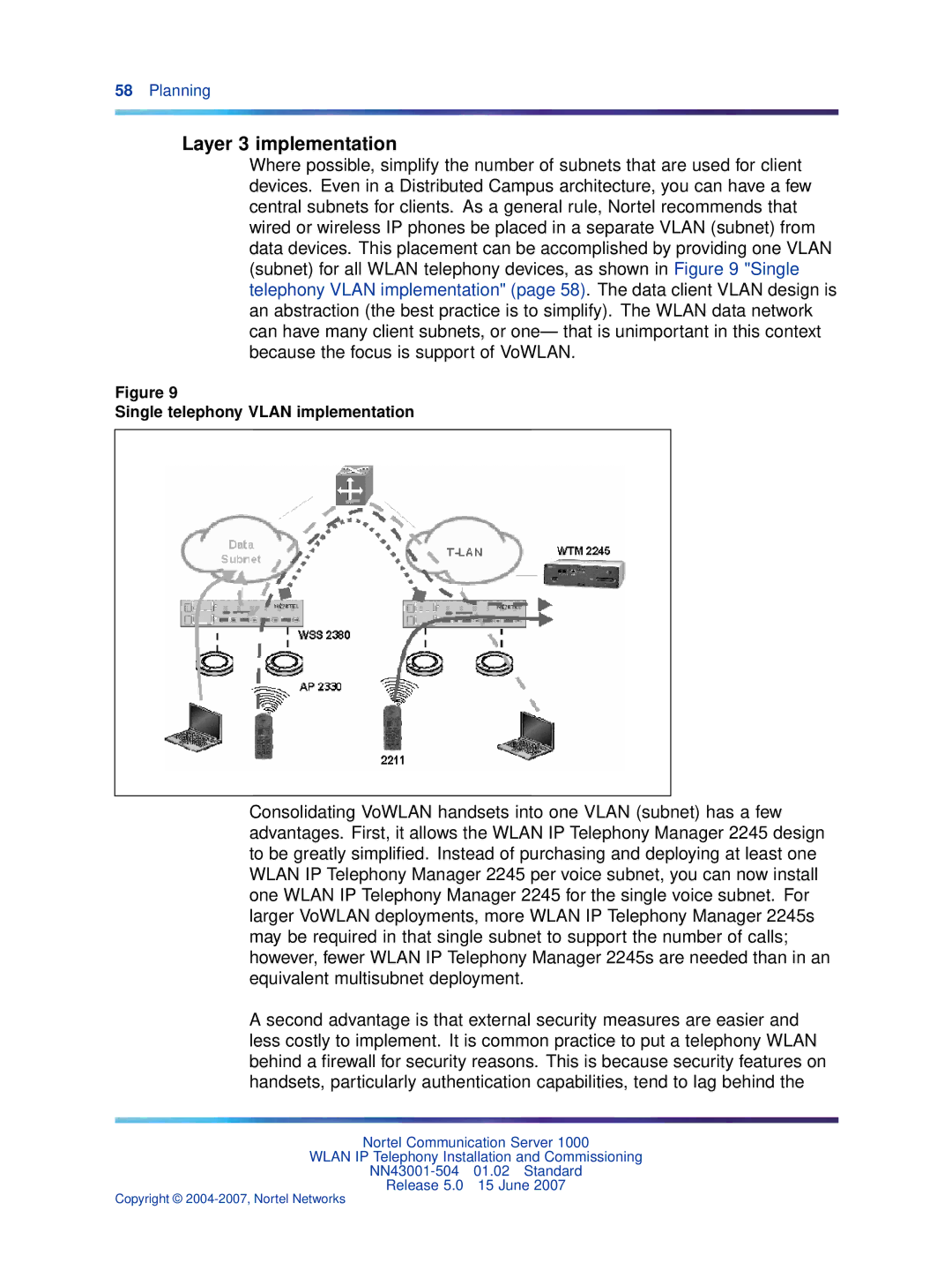
58Planning
Layer 3 implementation
Where possible, simplify the number of subnets that are used for client devices. Even in a Distributed Campus architecture, you can have a few central subnets for clients. As a general rule, Nortel recommends that wired or wireless IP phones be placed in a separate VLAN (subnet) from data devices. This placement can be accomplished by providing one VLAN (subnet) for all WLAN telephony devices, as shown in Figure 9 "Single telephony VLAN implementation" (page 58). The data client VLAN design is an abstraction (the best practice is to simplify). The WLAN data network can have many client subnets, or one— that is unimportant in this context because the focus is support of VoWLAN.
Figure 9
Single telephony VLAN implementation
Consolidating VoWLAN handsets into one VLAN (subnet) has a few advantages. First, it allows the WLAN IP Telephony Manager 2245 design to be greatly simplified. Instead of purchasing and deploying at least one WLAN IP Telephony Manager 2245 per voice subnet, you can now install one WLAN IP Telephony Manager 2245 for the single voice subnet. For larger VoWLAN deployments, more WLAN IP Telephony Manager 2245s may be required in that single subnet to support the number of calls; however, fewer WLAN IP Telephony Manager 2245s are needed than in an equivalent multisubnet deployment.
A second advantage is that external security measures are easier and less costly to implement. It is common practice to put a telephony WLAN behind a firewall for security reasons. This is because security features on handsets, particularly authentication capabilities, tend to lag behind the
Nortel Communication Server 1000
WLAN IP Telephony Installation and Commissioning
Release 5.0 15 June 2007
